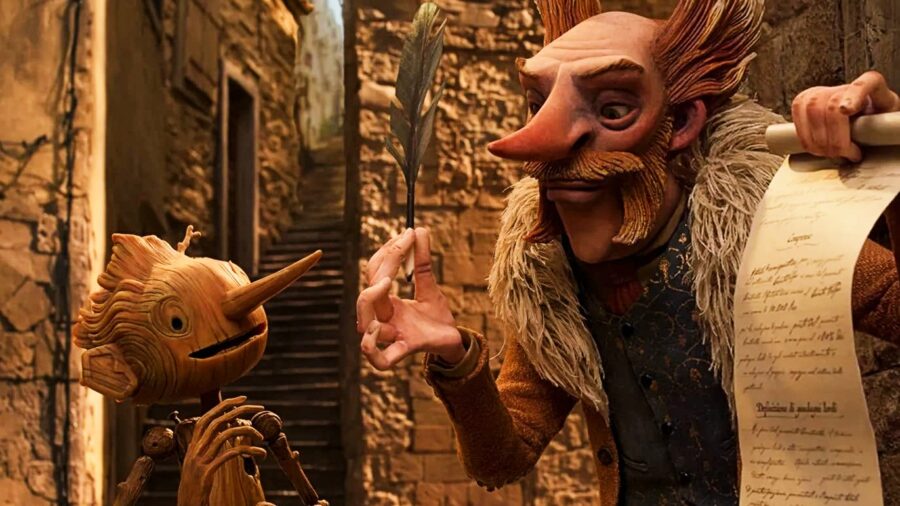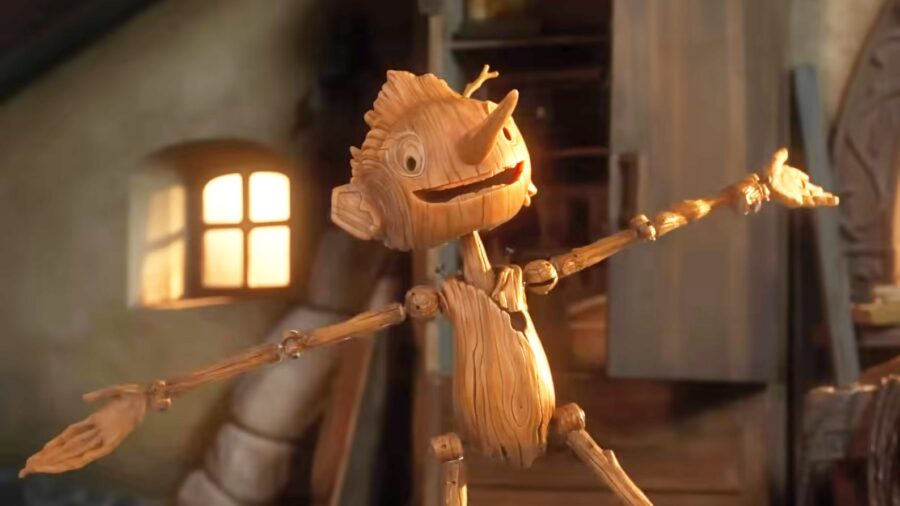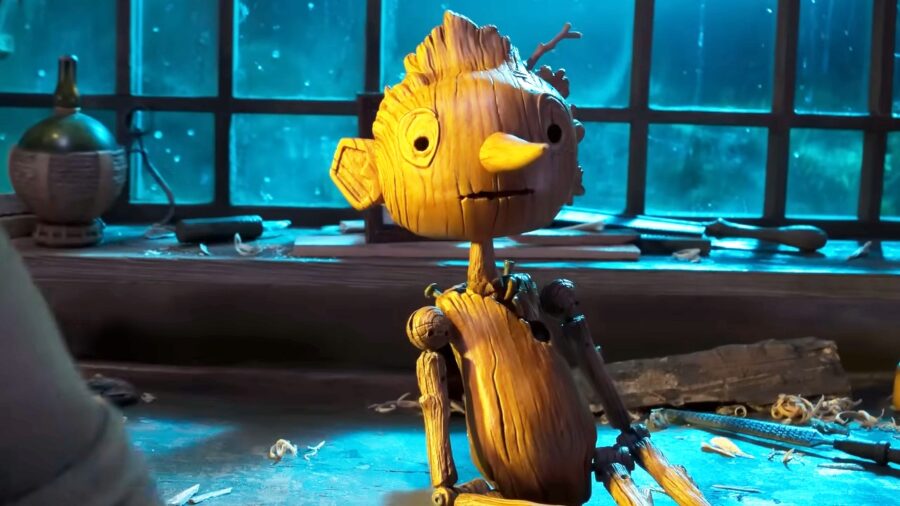Netflix Fairy Tale Adaptation Brings Horror And Heart To Classic Story

There is something utterly fabulous about adult artists who create for children without treating them like “children.” Guillermo del Toro’s Pinocchio on Netflix is one such example. It is a stop-motion animated film that blends compassion with terror and horror with heart.
The Original Story

I never really cared for the Pinocchio story growing up, perhaps because it was, at heart, a story of the spirit of a child being broken so he could become accepted by his father. The entire journey Pinocchio undergoes in the original tale is about him learning to become obedient, to become his “father’s son.” Lots of “honor thy father and mother” vibes run throughout it. As a child who was intensely rebellious, I couldn’t find myself in the story.
Del Toro’s Subversion

Fortunately, Guillermo del Toro’s Pinocchio on Netflix departs from the story in this way and a few others, focusing instead on how Pinocchio must learn to discover his humanity — compassion, autonomy, and intellect — but Gepetto must also learn to love his son for who he is rather than who he wants him to be.
As del Toro has said, this story, above all others, has been the one to influence him the most. It is heartening to see how he changed it to fit a more realistic and more child-friendly narrative.
Revamping The Classic Origin

Still, the movie is not without its horrors. Del Toro sets Pinocchio on Netflix in between World War I and World War II, in fascist Italy, with the rise of Mussolini. Gepetto (voiced by David Bradley), a woodcarver, loses his son during World War I and becomes a tired, old drunk over the course of the following 20 years. One night, in drunken despair, he carves a puppet in the rough shape of a boy using wood from his son’s grave marker.
When he awakens, he finds the puppet has come to life, thanks to a kindly wood sprite (voiced by Tilda Swinton). The wood sprite names the boy Pinocchio and assigns Sebastian J. Cricket, who was living in the original wood, to be Pinocchio’s moral guide.
Pinocchio Tries To Be A kid

From the beginning, Pinocchio on Netflix shows us an unruly, wild newborn boy running rampant through the town. While the townspeople, Gepetto, and Sebastian find Pinocchio’s behavior awful and something to be tamed, the audience sees it for what it is — a kid being a kid.
The contrast is of so many other children and townspeople acting more like puppets of the current political regime. Pinocchio finds temporary homes at the circus and in the army, where both leaders attempt to use and control him, but in both cases, he again breaks free.
A Strange Relationship With Death

One interesting note in Guillermo del Toro’s Pinocchio on Netflix is that the boy dies repeatedly, thanks to this or that mishap, but because he is immortal, he simply goes to “limbo” and meets Death, the sister to the wood sprite. She tells him that every time he dies, he will have to spend more time in limbo.
At first, Pinocchio treats this situation like a game, dying and returning with no concept of the consequences. But as the film comes to its culminating moments, the boy grows a real heart and matures in more ways than one. His experiences can be seen as learning from necessary mistakes, and it is the adults around him who must learn to allow the child to be a child.
Streaming Only On Netflix


REVIEW SCORE
The story of Pinocchio on Netflix is a beautiful one — weaving heartbreaking scenes of death and destruction into breathtaking landscapes of love, life, and hope. My kids loved this version of Pinocchio, and it is, honestly, the only one I have enjoyed thus far.
Thankfully, del Toro was able to finally bring his vision to life, after decades of dreaming, and Netflix was smart enough to pick it up. Rotten Tomatoes has the movie at 96 percent positive reviews by critics.












